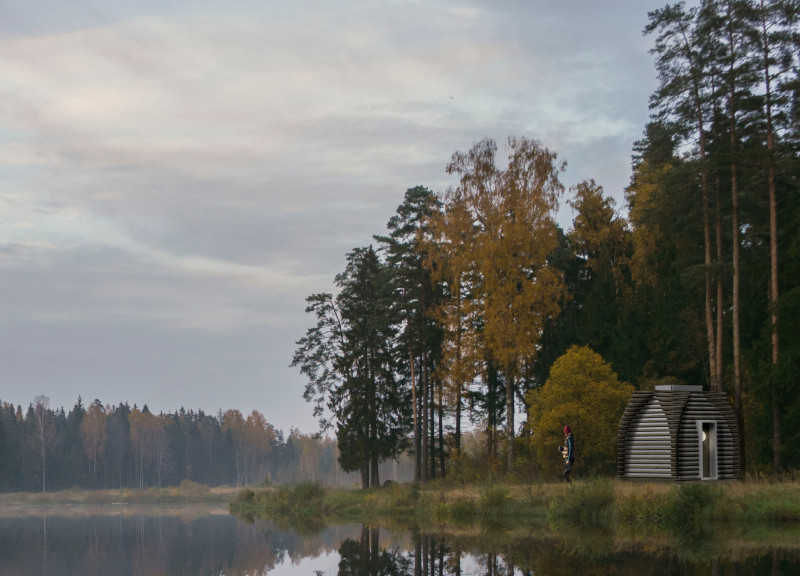5 key facts about this project
This architectural design project focuses on creating a unique shelter solution that integrates traditional Latvian wood architecture with contemporary design principles. The primary objective is to provide a modular, transportable, and energy-efficient refuge suitable for various environments within Latvia's diverse landscapes. With an emphasis on sustainability and user interaction with nature, the project demonstrates a thoughtful balance between functionality and aesthetic coherence.
Wood as a Dominant Material
The design prominently features pine timber, celebrated for its availability in Latvia and its aesthetic qualities. This choice of material establishes a connection to the local architectural vernacular while fulfilling structural requirements. The exterior showcases a geometric form characterized by soft, rounded edges, enhancing the shelter's integration into the natural setting. This design approach not only aligns with the principles of regional architectural traditions but also fosters a sense of belonging within the landscape.
In addition to the timber, aluminum panels are included for enhanced durability and weather resistance. Recyclable materials such as high-performance polyester insulation are utilized to promote energy efficiency and longevity, addressing modern ecological concerns associated with construction materials.
User-Centric Modular Design
The shelter is designed with modularity as a core principle, allowing for easy replication and adaptability across different environments. The structure can be assembled quickly, which is crucial for temporary or semi-permanent use. Within the project, there are two main versions of the shelter: the Standard version, which emphasizes essential living arrangements, and the Advanced version, equipped with a kitchen module and a chemical toilet for enhanced comfort.
This flexibility permits users to tailor their experiences to suit their individual needs. The introduction of optional external modules—such as terraces for elevated views or bath areas for relaxation—is a notable aspect of the design, encouraging a deeper interaction with the surrounding environment. The shelter's internal layout emphasizes open spaces that can accommodate social interactions, aligning with the project's vision of gathering and sharing experiences amidst nature.
Sustainable Performance and Environmental Integration
The project demonstrates a commitment to sustainability through its energy-efficient design. The self-heating qualities of the shelter ensure that comfortable temperatures can be maintained with minimal energy input, reducing overall resource consumption. The architectural choices reflect a comprehensive approach to environmental performance, with careful attention to insulation and thermal dynamics.
Moreover, this design promotes not just shelter but also a way to engage visitors with Latvia's natural beauty. By capitalizing on local materials and construction techniques, the project embodies a model that can inspire future architectural endeavors focused on sustainable living in harmony with the environment.
For a comprehensive understanding of the architectural plans, sections, and design ideas that inform this project, explore the full details of the presentation.


























